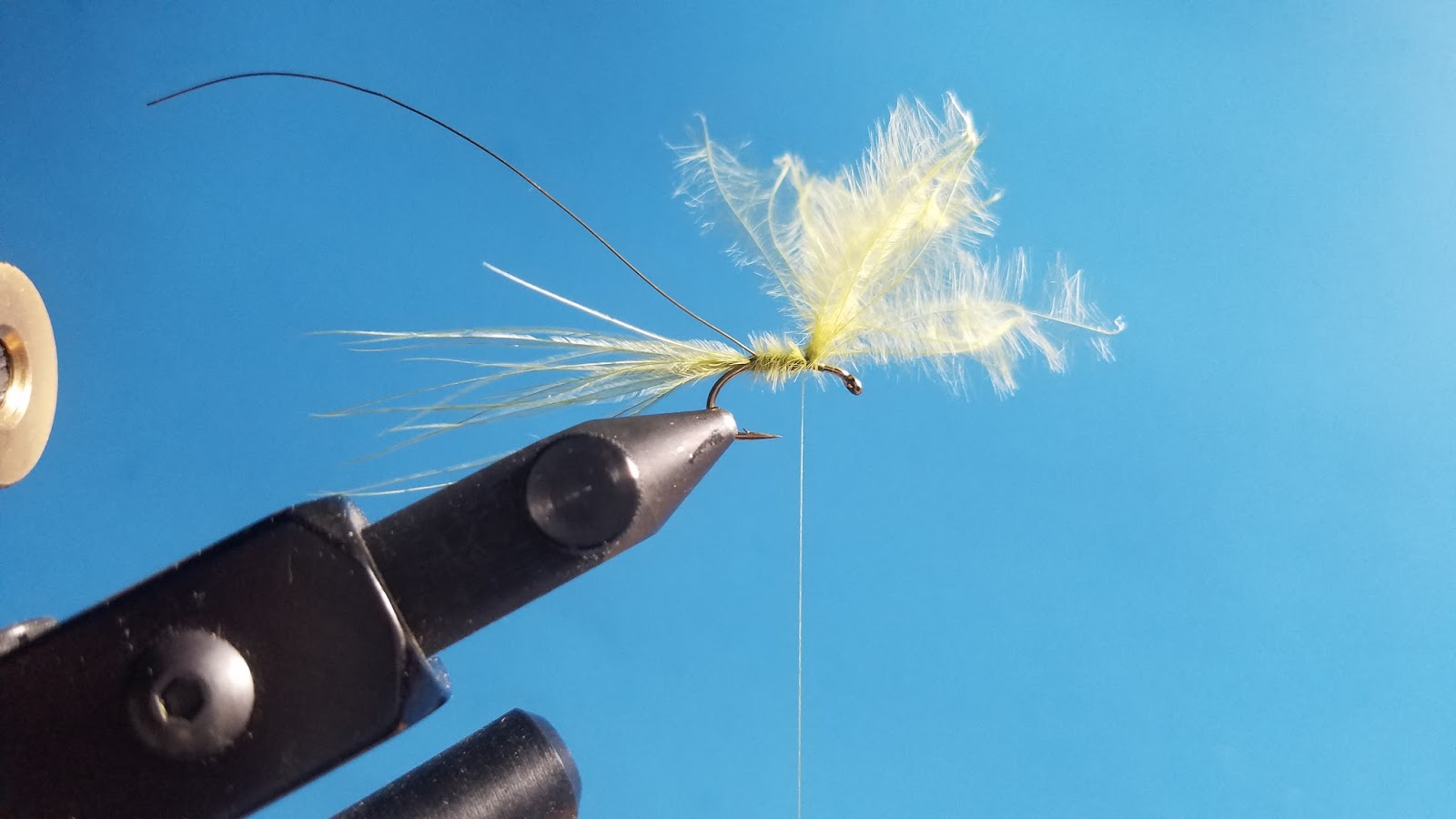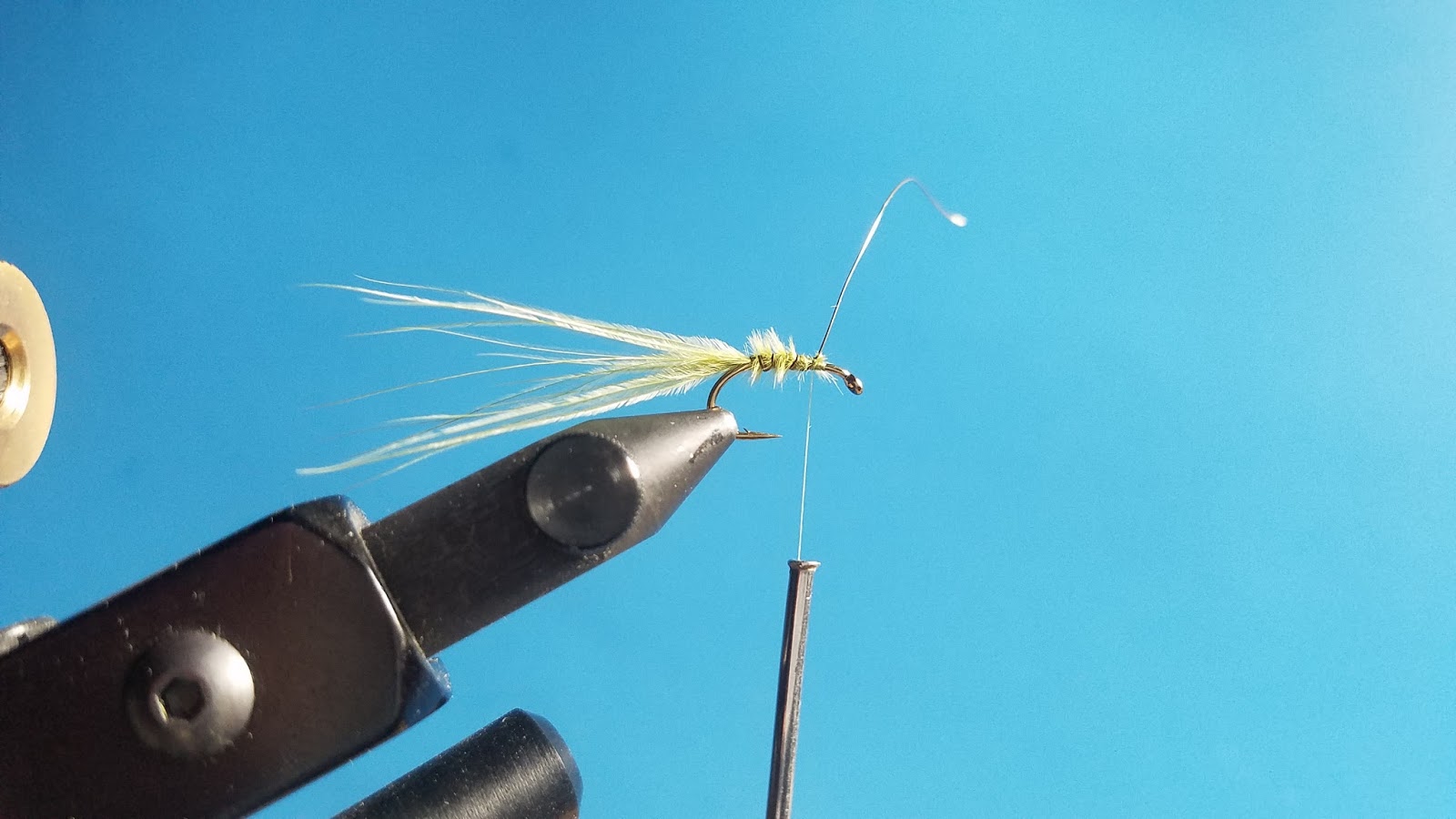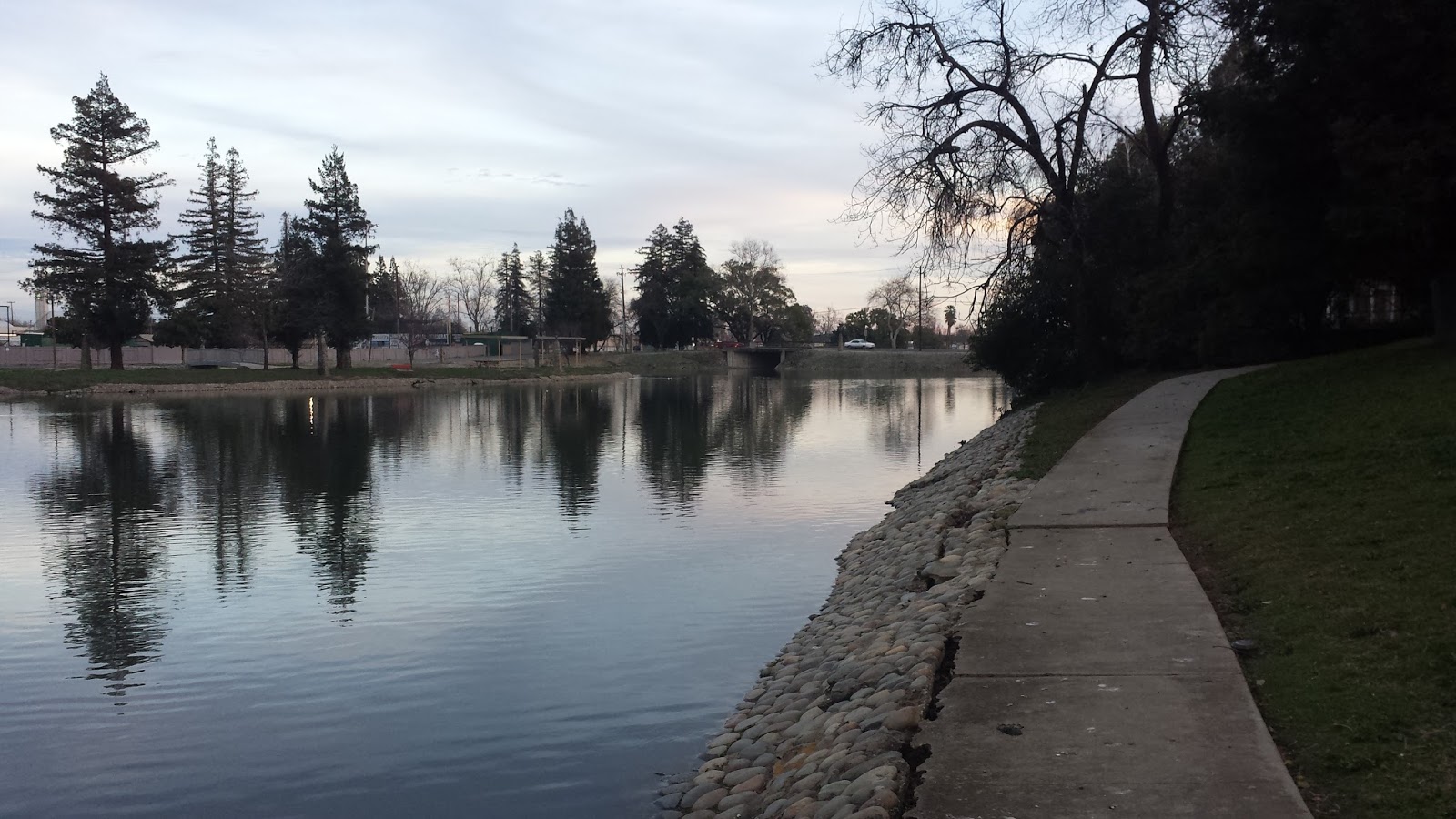The S&M nymph is a pattern designed by local guide Hogan Brown. This is a superb blue-winged olive nymph that Hogan created specifically for the Lower Yuba River. Not only does this pattern work well on its home river it also works on any river or stream with a significant BWO population.
S&M Nymph
Material List
TMC – 3769 – Size 16
Bead – Gold – 3/32”
Uni-Thread – 8/0 – Olive
UTC Ultra Wire – Olive
Krystal Flash – Midge – Olive
Mercer’s Buggy Nymph – Dubbing – Olive
Pheasant Tail – Natural
Goose Biot – Brown
Fly Tying Instructions

Step 1 – Set up your hook with the beadhead.


Step 2 – Tie in your thread and three strands of pleasant tail fibers. . I like to measure the fibers about half the shank of the hook. Cut off the excess. Wrap your olive thread to create the abdomen

Step 3 – Next tie in your olive wire. Note that the original recipe uses a solid dark olive wire rather than the shiny variant.

Step 4 – Make a few turns with your wire to form the segments of the abdomen and cut off the excess.

Step 5 – For the goose biot wingcase cut off a bit of the pointed end to get full use of the fiber. Tie in the biot.
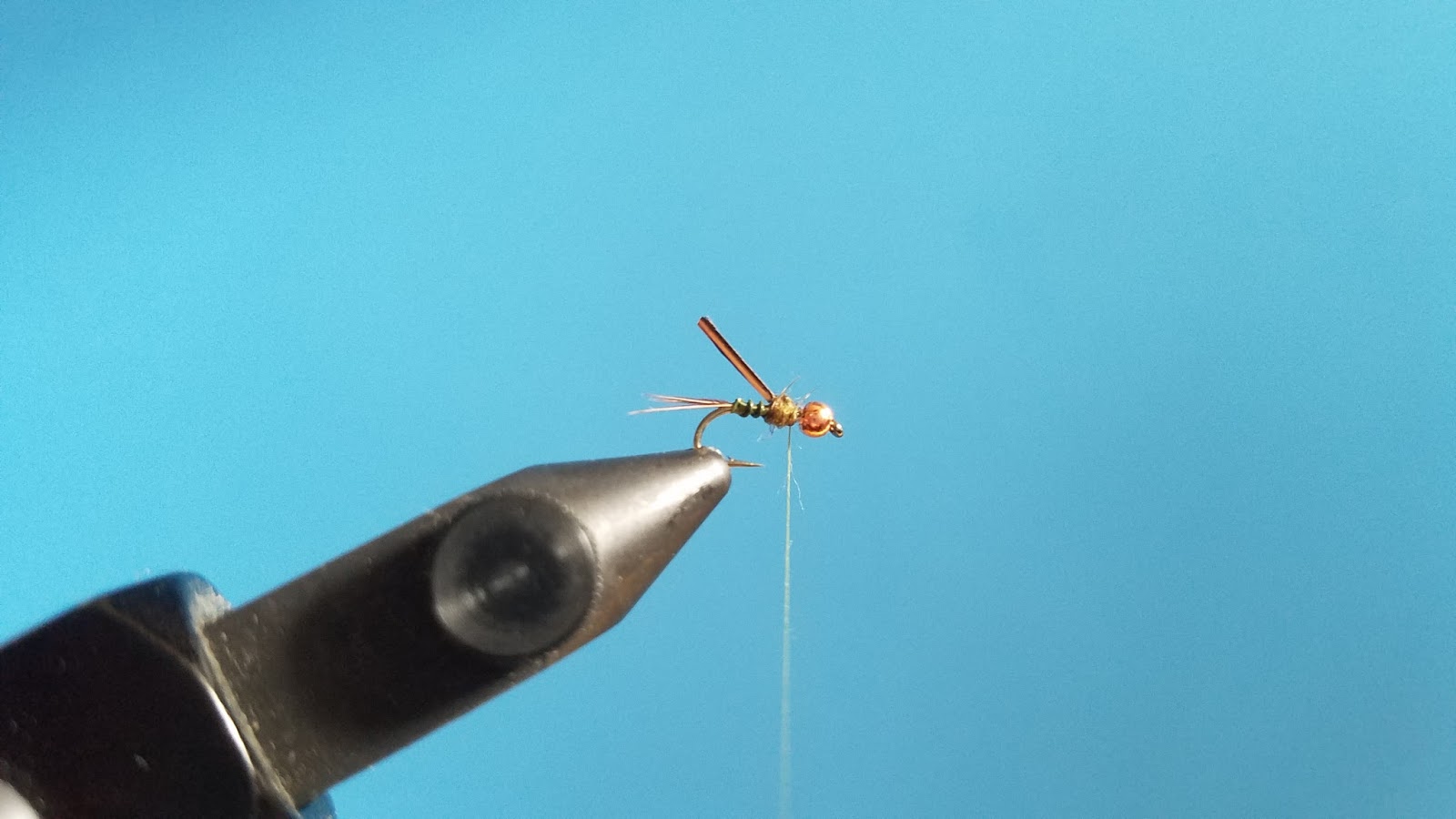
Step 6 – Tie in a bit of dubbing about halfway up the shank of the bare hook.

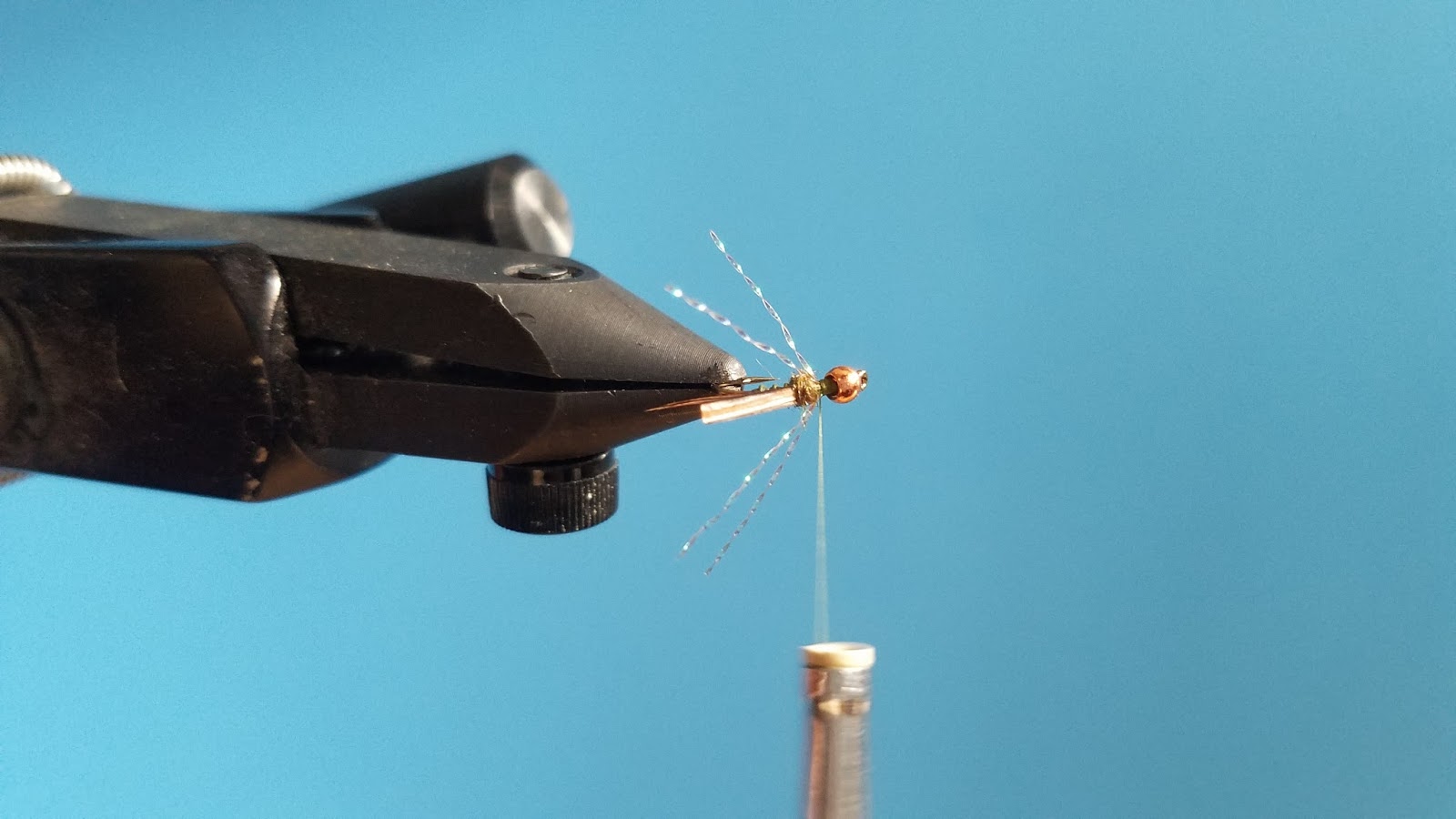
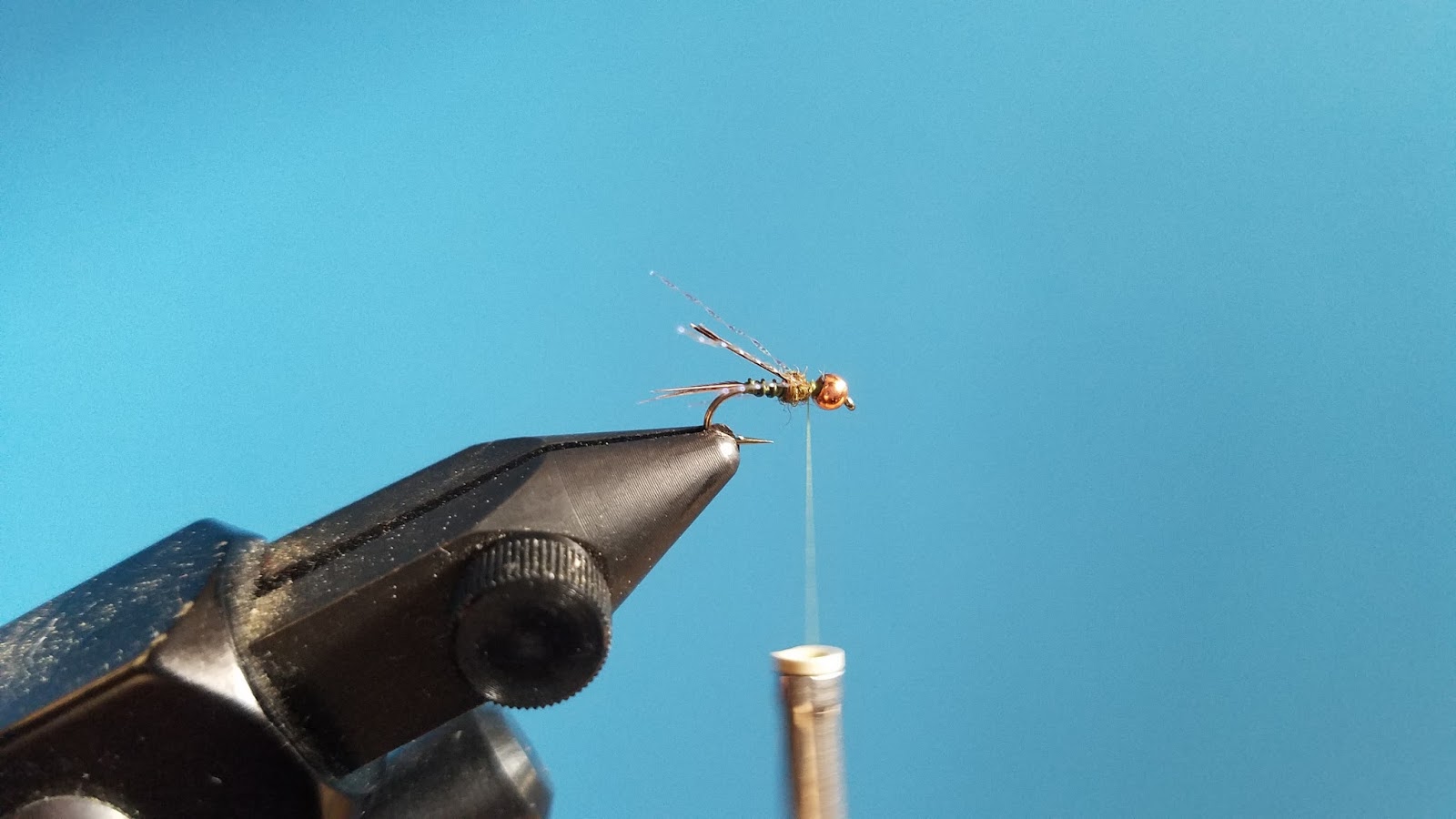
Step 7 – For the krystal flash legs I like to cross two strands like an X and tie them in with a figure eight wrap. To secure I will pull the strands back and make a few thread wraps while trying to them keep them in place.

Step 8 – Dub the rest of the hook. You may need to add a bit more dubbing behind the copper bead in order to create the proper tapered look of the fly.


Step 9 – Fold the goose biot over. Make a few wraps to secure and whip finish twice for durability.

Step 10 – Cut off the excess goose biot so that it folds just over the beadhead.


Step 11 – Cut off the excess krystal flash. I like to pull back the krystal flash back towards the bend of the hook and cut were the strand meets the bend.








